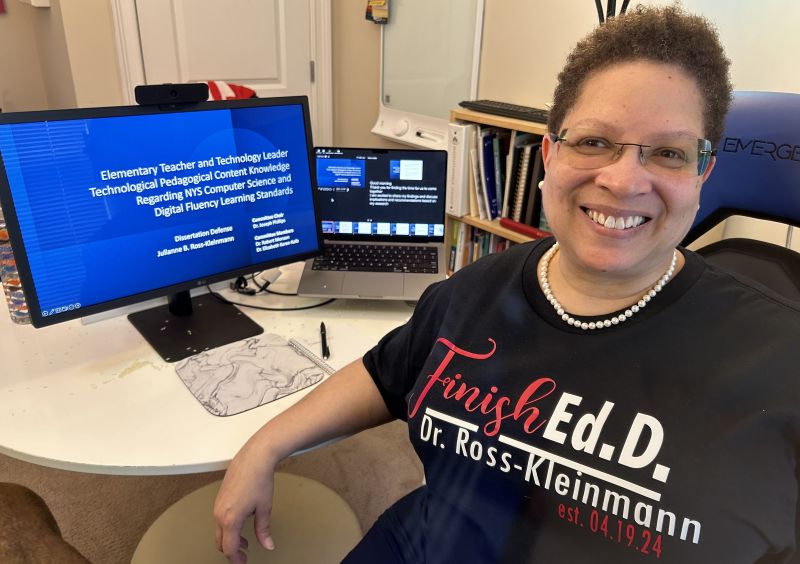Dr. Julianne Ross-Kleinmann of Ulster BOCES in New York is transforming its Model Schools and Distance Learning programs through a bold, collaborative vision. By forging strategic partnerships with edtech vendors, instructional supervisors, and regional agencies, she is building a more responsive and innovative infrastructure that supports personalized, equitable, and future-ready learning.
“My family was always active in church or volunteerism within our community, so I did the same thing,” says Ross-Kleinmann. “Whether it was Key Club, Kiwanis, or my sorority—I saw the value of partnering and networking with others. I actively started doing so in my classrooms and then continued as a staff developer and as an instructional tech.”
As a connector of people, ideas, and opportunity—as well as holding leadership roles with ISTE, statewide initiatives, and national platforms such as the AI Café podcast—this top supervisor of instruction services has inspired the most current thinking in instructional technology in educators across her region.
For this and other efforts, Ross-Kleinmann was recently recognized with the Innovative Chief Academic Officer Award at the Pre-ISTE Regional Leadership Summit in San Antonio as part of Tech & Learning’s Innovative Leader Awards.
Ross-Kleinmann shares how she uses networking to enhance her district’s tech offerings, with three tips on how to add partnerships to any program.
Tech Talks
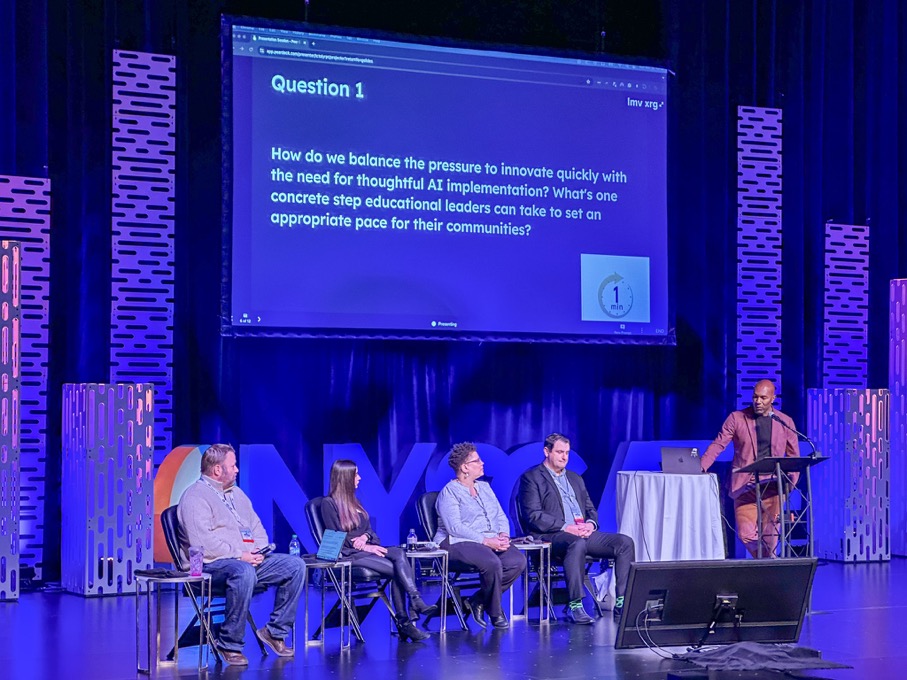
“I’m old school, but I love tech,” Ross-Kleinmann says. “I like to write. I have journals. I know cognitively I’m going to remember it better if I write it down because there is research in that brain work, but I also like tech. I’ll come home and play games. I use tech to create and AI to brainstorm.”
Both elements have a place, and entry into true integration starts with education.
“If we’re talking staff development, you cannot exclude technology,” she says. “So many people see tech as a separate entity, but what day are you not using technology in your work or your personal life? How can it not be included in the conversation?”
Sometimes, having the conversation is the perfect start to finding solutions and learning how to harness the power of emerging technologies to best help students. Errol St. Clair Smith, executive producer of Blindsided by AI, a documentary about the first year of generative AI in education, tapped Ross-Kleinmann to join his “AI Cafe” podcast.
“The group comes together for a ‘coffee talk,’ all coming from different perspectives—a middle school teacher, a university professor, an early childhood educator-tech coach, and an education researcher,” she says. “A topic is offered and we just talk about it. ‘Is it really cheating, is it going to replace us, what tools are you using?’ Just authentic unscripted conversations about AI.”
The group caps the meet-up by sharing AI tools they find most helpful and effective, offering concrete take-home value along with their insights. St. Clair Smith met Ross-Kleinmann in a media-focused event at ISTE, further underlining the pros of conference networking.
Making Valuable Connections
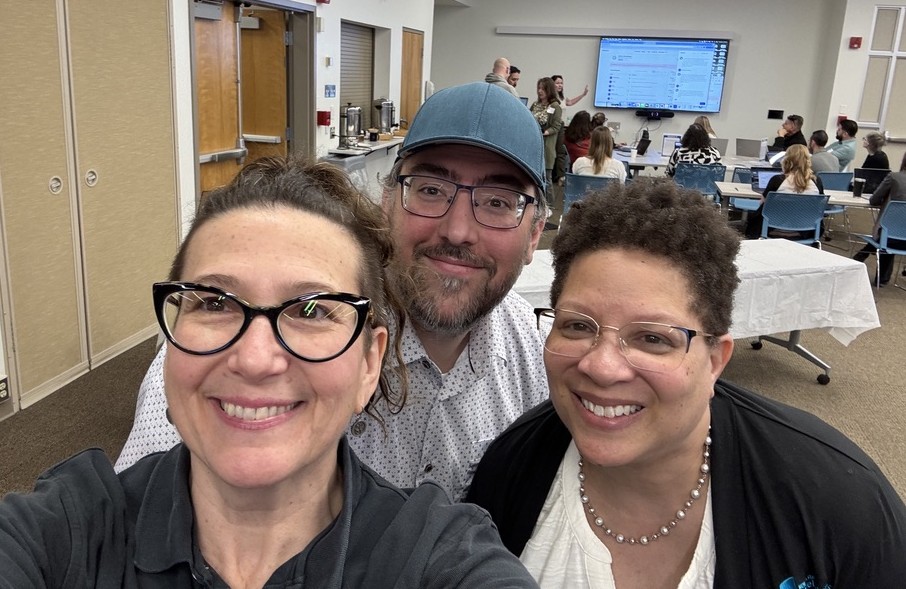
The current reality of an uncertain financial landscape has budget matters top of mind for many school leaders. Looking to strategic partnerships and getting creative with connections can help make the most of resources in tight times.
“If you feel like finance is an issue, partnerships can be virtual,” says Ross-Kleinmann. “We moved our Sustainability Future summit online so we can have presenters from all around the world. CLIC is a great space for online partners. Sometimes we just get stuck where we live and don’t realize what’s past the county line. Partnerships are so important to me, in part for trying to open a world of possibilities for students.”
Asking for support is part of the give-and-take of deeper networking relationships.
”I was fortunate to have training from the Columbia Challenge Grant,” she says. “When there was something I didn’t understand, I knew I could reach out to organizations like ISTE to ask questions. Broaden your scope for help, but partners don’t necessarily have to be a vendor or someone with a financially-motivated interest in connecting. Partners are also district family members, or local businesses.”
It’s not necessary to focus too heavily on scaling up your circle or worry about the number of partnerships as these will grow organically.
“I was laughing with my husband. I said, ‘I don’t always get a big audience. Do I do something to change that?’ He said no, just be your authentic self because when you do have an audience, it’s people who really want to hear what you’re saying,” Ross-Kleinmann says. “You usually end up becoming friends with that handful of people and connections form, even if you only see each other once a year. Now I can reach out to so many people either to share something really cool that’s happening or say I’m happy to support you in something that you’re doing or could you support me in something I’m doing? It quickly becomes an amazing connection of people.”
Being open and putting yourself in a place to meet new people. or connect in real life with those whose work you follow online, is key.
“Attending conferences just means making additional connections, learning something new, and then sharing that with others,” Ross-Kleinmann says. “You need to make sure that your students are well supported, but help them see past the horizon.”
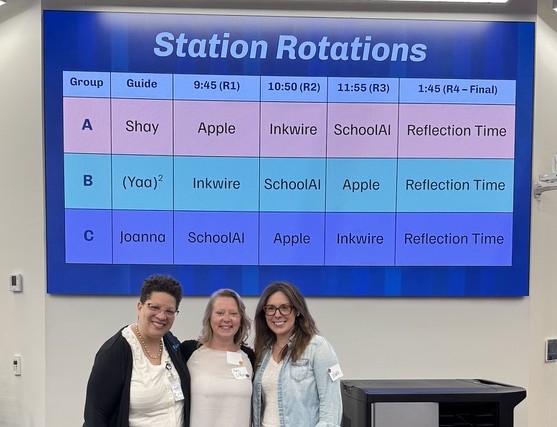
The ABC’s of Adding Key Partnerships to Your Program
A few suggestions from Ross-Kleinmann to forging partnerships.
Attend conferences with your team.
Connect with outside groups—such as Tech & Learning, Learning Forward, ISTE— and attend their conferences and take a team with you. “You are going to learn so many things,” she says. “If you can bring students to those conferences, even allow them to present, that is so eye-opening for them to learn what is out past their horizon.”
Bring information back.
Take the information you learn back not only to just your cabinet and your leadership team, but to the teachers and the building administrators. Don’t shy away from the idea of having partners come to the school, their motivations are not always financial. Some want to learn how to make their product better or how to help students.
Connect outside of your local organizations.
It’s great to belong to the AASA, but you should also step out of the box and consider a space with which you might not have direct ties. Go national so that students can see new options of where they can go and what they can do.
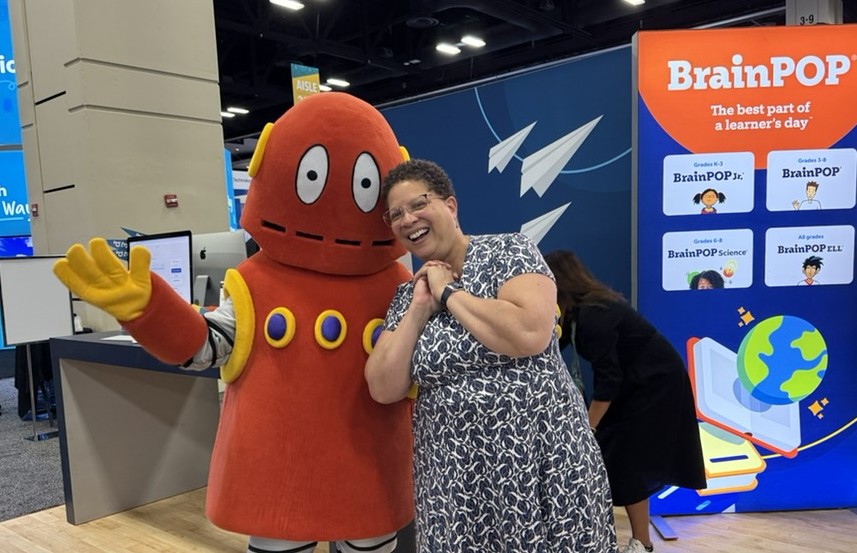
- ChatGPT
- SchoolAI
- Inkwire (AI)
- Canvas
- Google Workplace
- Microsoft
- Zoom
- Screencastify
- iPad/Macbook Pro
- Logitech Webcam


